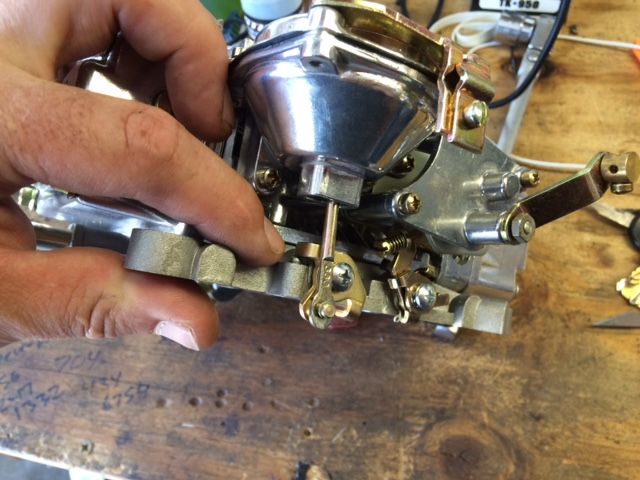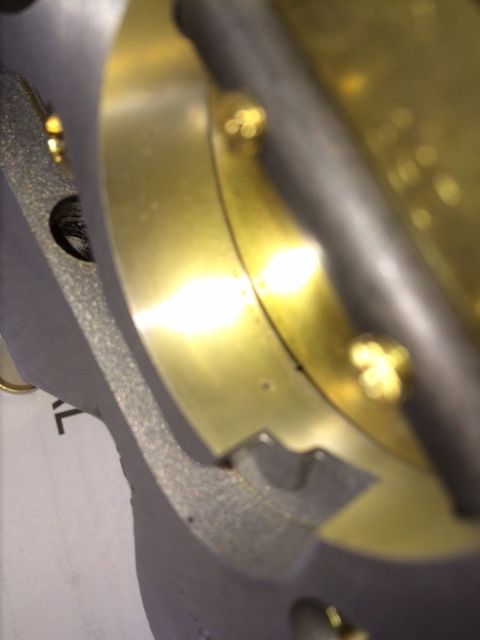When I was a newbe,I took that secondary cracking screw out, and put it back in,with the screwdriver slot facing up. Then I could adjust it from the top; engine off/WOT. My 1850 did not have transfer slots in the rear barrels.I eventually found a really small screwdriver to do the job and returned the screw to its proper orientation.
That screw is there for several reasons;1)to prevent the secondary plates from sticking closed in the bores, and 2)to provide idle-air bypass for engines with big cams, such that the front plates do not have to provide that, and 3) to allow the carb to work on many different engine displacements and levels of tune.
If the Front blades are opened too far, the transfers start to flow more fuel than the engine needs, and the engine runs too rich.Sometimes it wants to stall, so you crank in more speed, which makes it richer yet.It becomes a vicious circle.The engine will probably continue to run that way,But the exhaust stink will be unbearable, and it will be too rich throughout the low speed range. Its also possible, if you get really far up on the transfers, to introduce other driveability issues.
So, as others have said, the front blades(primaries) are adjusted to a square transfer slot exposure, while the rear blades(secondaries) are just barely cracked open.This is the starting point. From here, if the engine does not idle at a reasonable RPM,then the ignition timings are manipulated first.If the idle timing becomes excessive to accomplish this, then the secondaries are opened a tad more, and the ig timing backed down.If tip-in problems occur, then the primaries are opened a tad to provide a bit more transfer fuel, the secondaries returned to baseline, and again the idle timing is manipulated.
After the idle timing is established, the power timing is determined, and then the rate of advance. Finally, the vacuum advance system is fine tuned.
But it all starts with the low-speed port sync-up, and the secondary cracking screw, together with the idle timing.These three have to be synchronized and established very early in the tuning regimen.Spend what ever time you need, to get this right, because once the power-timing is established, any changes to the idle-timing will require a rework of power-timing mechanism.Those two are married in the dizzy.
If you change cams,or intakes,or remove exhaust manifolds for headers, or change the compression ratio; these will all require a re-examination of the idle settings. And if the idle-timing gets changed, then the power-timing will also have to be changed.
The vacuum advance system can be tuned to cover and or alleviate many low-speed tuning issues, as well as decrease fuel consumption under cruising conditions.
Hope this helps.



















